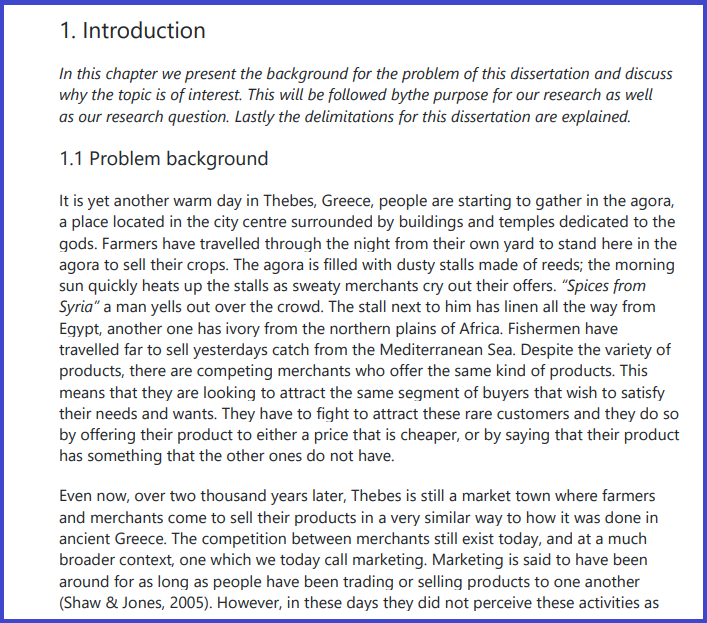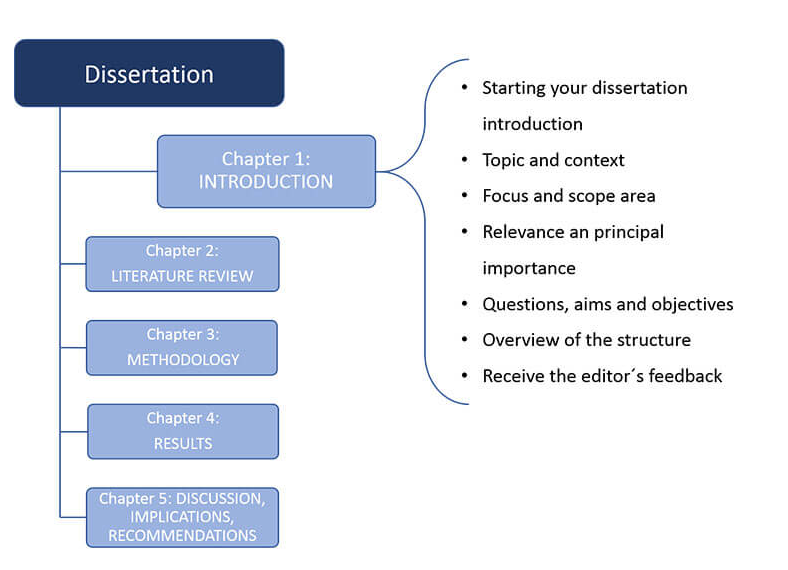Dissertation Introduction: 5 Steps to Writing an Impressive One
Most graduates stumble when the time comes to write the introduction of a dissertation. No wonder:
First, a dissertation introduction is not a mere paragraph with a hook and a thesis statement you wrote in essays and other college papers. It’s about a page in length, and its structure is much more complicated.
And second, your introduction to dissertation needs to include information about your whole paper: the context and scope behind your topic, the relevance of your research, your aims and objectives, and the overview of your dissertation structure.
Finally, it’s critical you wouldn’t confuse the introduction with your dissertation abstract and an introductory paragraph in your dissertation proposal.

Sounds confusing?
This blog post will help you clear out and shape everything about dissertation introduction writing. Sure thing, you can always ask for professional help or buy dissertations online, but let’s try to handle it by our own strengths first, agree?
Abstract vs. Introduction
In plain English, a dissertation abstract is a summary of your entire study, with research aims, methodology, and conclusions, while a dissertation introduction provides details on the background and your motivation for the study, stating your aims and objectives.
Confusing anyway? Let’s try this:
Abstract:
- comes before the introduction section of your dissertation
- overviews the purpose of your study, its research question, the methods you used for research, and conclusions you’ve drawn from it
- looks like an executive summary of your work
Example:

Introduction:
- comes after the abstract of your dissertation
- provides the background of your study, sharing a brief description of what knowledge already exists in the subject area (based on the literature review) and what gaps are still present
- explains why your research is relevant and what aims and objectives you have for the dissertation
Example (a part; see the whole one in the source):

How to Write a Dissertation Introduction
The general rule is to write a dissertation introduction in size 12 Times New Roman font, double-spaced. Depending on your topic and research, this chapter can take 5-20 pages and include the following parts:

1. Start with a topic and context
First of all, introduce your dissertation topic to the audience. (You’re writing a dissertation introduction, after all.) Do your best to provide background information to contextualize your research, but ensure you also explain why your topic is worth researching. In other words, why should the academic community care?
To cover that “why,” you’ll need to provide the information on what is already covered in the subject area (based on the existing documents, literature, academic debates, etc.). For that, outline the top 5-7 authors who covered the problem, explain why they are so influential, and how they relate to your topic. Also, mention the gaps still missed and necessary to address in the research.
Note: Don’t make this section too long — one (max. two) pages will be enough for the background information to provide the context. It’s critical to arrive at your research scope and focus so the academic advisors wouldn’t reject your whole paper at its very beginning.
2. Provide your focus and scope
Now it’s time to narrow your subject area and introduce the particular problem or question you’ll focus on in your research. Determine the scope: What you will and won’t cover in your study. This scope may depend on many factors:
- Your time or budget constraints for research
- Specifics about the methodology you’ll use for the research
- Ethical issues about your population of the study
- Themes or aspects of your topic
- Any variables that can bias your research, etc.
Your focus also needs to provide the rationale for your study.
Explain why you research this particular area(s) and remember to link the reasons to the background information you’ve already shared. What you need is to tie the importance of your study with the overall research field. This paragraph of your dissertation introduction leads into the aim and objectives, explaining the value and relevance of your research for the academic world.
3. Explain the relevance of your research
What is your motivation for choosing this subject for your dissertation and doing this research? How does it relate to existing work on your topic? Why do you think it’s relevant and timely to do it now?
Start a paragraph by overviewing the current state of research: provide literature, cite the most relevant resources, and focus on the practical application of your topic. Please remember that you’ll conduct a more in-depth survey of relevant sources in the literature review section, so there’s no need to go in-depth in your introduction. You better focus on how your dissertation will contribute to the community:
- Will it address the gap in the literature devoted to this subject area? Does your topic lack critical investigation?
- Does it propose a new understating of the topic? Will you look at the area from a different angle?
- Will it help to solve any theoretical or practical problem?
Explain what new insights you expect to contribute to the academic world with your research. The committee wants to understand how it adds value and why it deserves consideration. Ensure you state it directly in your dissertation introduction.
4. Reveal your aims and objectives
It’s probably the most critical part of your introduction because it sets up the expectations for the rest of your dissertation. Aims and objectives will allow the committee to see if you’ve reached what you expected and come to the desired results at the conclusion of your work.
The aims and research objectives depend on your topic and focus, as well as your dissertation discipline, but ensure you state them clearly:
What is the central aim of your research? Do you plan to test any hypotheses? If so, formulate them in your introduction, either. Do you suggest any relationships between variables? If so, mention that conceptual framework.
Note: You can briefly describe the research methods you used in your dissertation to reach the objectives, but don’t write about all the details. Remember that it’s an introduction; you’ll include all the details in the separate dissertation chapter where you’ll tell about the methodology you used.
The aims and objectives in your dissertation introduction need to be:
- Appropriate: Ensure they relate to your study.
- Clear: Stay unbiased and avoid ambiguity.
- Distinct: Make each objective assist you in achieving the overall research aim.
- Achievable: Ensure your aim is realistic, and you can complete it within a reasonable timeframe.
5. Overview your dissertation structure
The final part of your dissertation introduction is brief: Write 1-2 sentences outlining the structure of your work. It will help guide the audience on what they’ll see in your paper if they continue reading.
Think of it as a concise summary of each chapter, showing how each contributes to the central aims and objectives of your research.
Sounds not that challenging, huh?
And here go some more tips for dissertation introduction writing. The below cheat sheet can help you structure everything in the best way possible:
Dissertation Introduction Structure: Checklist
Okay, now we are almost done with writing an impressive dissertation introduction. To ensure you don’t miss anything when crafting it, consider the below checklist. Once you finish the introduction draft, do your best to answer the following questions:
- Have you introduced your research topic?
- Have you provided the context for readers to understand your dissertation topic better?
- Do you specify the focus of your research?
- Have you shown the relevance of your topic? Why is it important?
- Have you stated the problem or question your research addresses?
- Do you outline the aims and objectives of your research?
- What about your dissertation structure? Have you provided its overview in the introduction?
Your confident “Yes!” to all these questions is a signal the dissertation introduction is ready, and now you can move on to the next chapter of your paper.
Need Help With Dissertation Writing?
Now that you know the process of writing a stellar dissertation introduction, it’s time to craft yours! Follow the above steps, consider the given checklist to cover all the critical aspects — and you’re all set. Also, feel free to read extra dissertation writing tips and check the introduction samples available online to have an exact idea about their content and formatting.
The key is to find the right research question and convince readers about your objective for choosing this particular subject area. Know the topic background and then explain it impressively to justify the relevance of your research.
Any questions left? Don’t hesitate to ask our professional writers to help you with dissertation introduction writing.